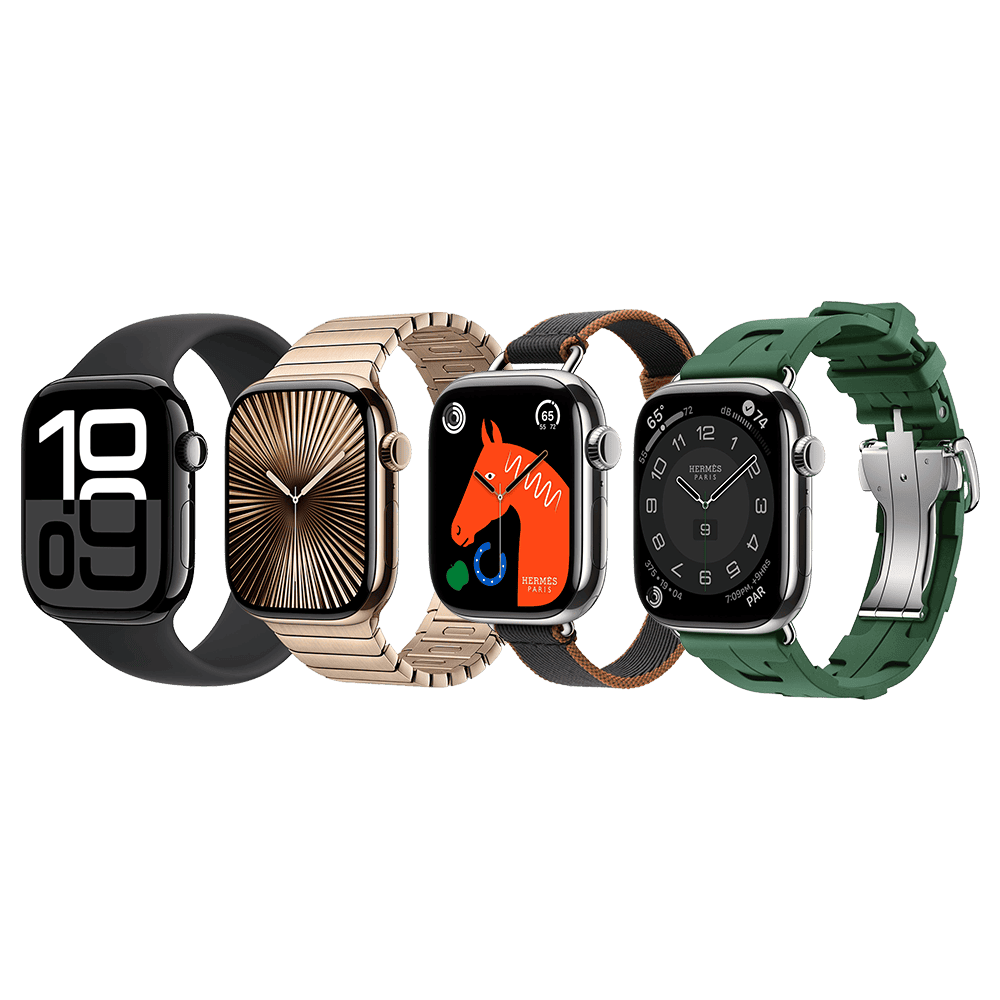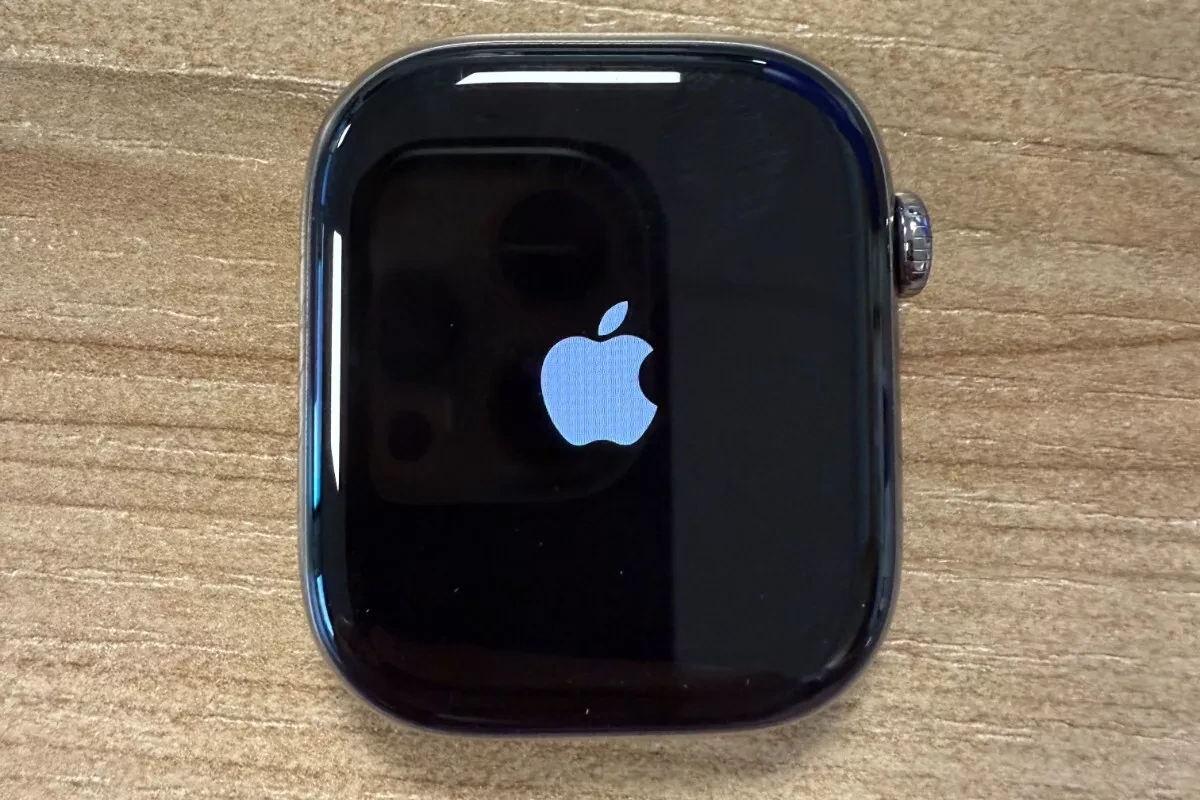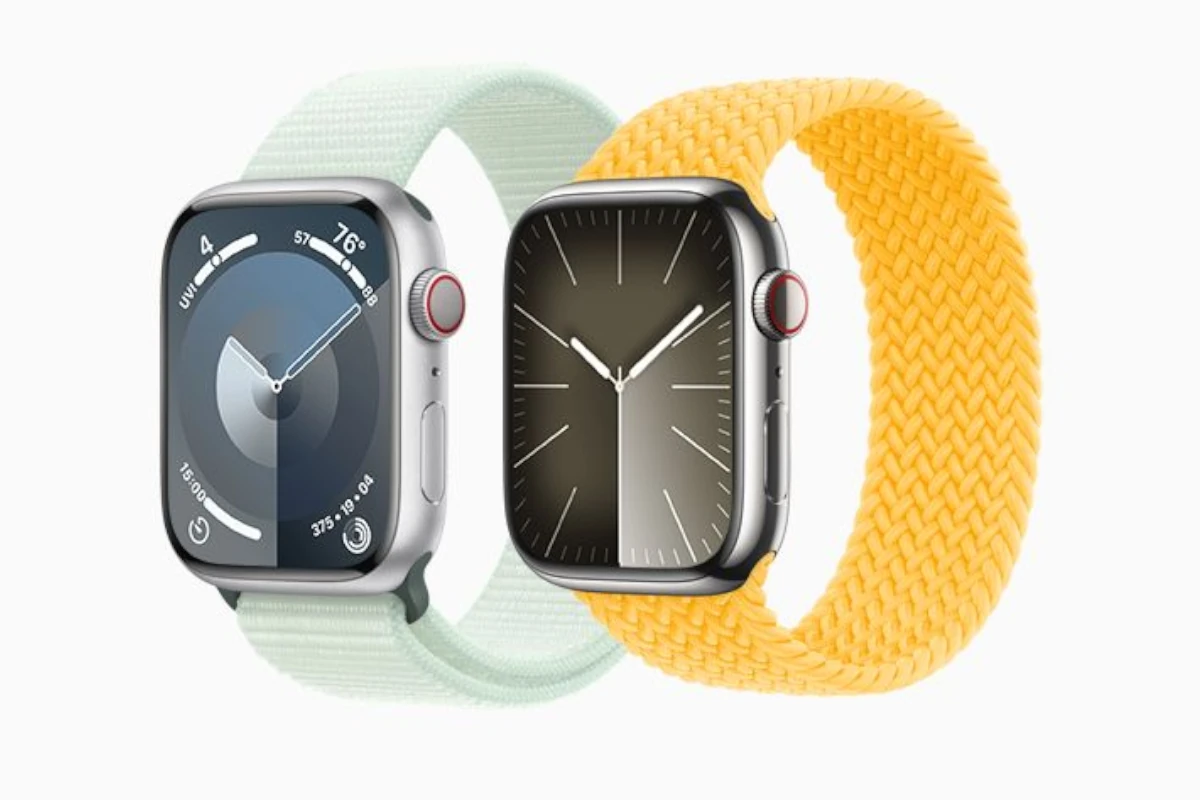Sales of the Apple Watch have slowed recently due to challenging year-over-year comparisons and disappointing results for the Apple Watch Series 10, which launched in September 2024. Although the watch aimed to reignite interest with new health features and capabilities, the updates were not significant enough to draw in new users or get older users to upgrade. Sales of the Series 10 failed to make enough of an impact to slow the bleeding and competing options in the smart watch space have been gaining market share on Apple.
But Apple hasn’t given up. While specific details remain unconfirmed, Apple is expected to launch an all-new Apple Watch Ultra 3 later this year (September 2025) and industry experts expect advancements in areas such as sleep tracking, stress monitoring, and fitness analytics to make this their best watch yet.
Apple’s watch business has faced significant challenges due to increased competition from overseas markets, particularly from Chinese manufacturers. These competitors have introduced pricing pressure and have successfully delivered innovative features that cater to a broader range of users, unlike Apple’s one-size-fits-all approach.

Apple hopes it’ll regain some market share by integrating artificial intelligence and machine learning technologies into its watches. Enhancing the health-monitoring capabilities of the Apple Watch will likely improve its functionality and appeal, but it remains to be seen whether these upgrades will attract new customers.
Apple Watch Sales: A Slight Dip and Future Outlook
Recent reports indicate a slight softening in Apple Watch sales. While still a dominant player in the smartwatch market, Apple has seen some fluctuations in demand. Several factors may be contributing to this. The overall economic climate plays a role, as consumers may be more cautious with discretionary spending.
Additionally, the smartwatch market is becoming increasingly competitive, with other brands offering compelling alternatives. Some analysts suggest that the iterative nature of recent Apple Watch updates may also be a factor. While the Series 10 offers improvements, some users may not see a compelling reason to upgrade from older models.
Despite the recent dip, the long-term outlook for Apple Watch sales remains positive. The anticipated introduction of new health features, such as continuous glucose monitoring or more advanced sleep tracking, could drive renewed interest. Apple’s strong brand recognition and loyal customer base also provide a solid foundation for future growth.
As smartwatches become more integrated into our daily lives, the Apple Watch is well-positioned to capitalize on this trend. The company’s focus on health and fitness, combined with its seamless integration with the Apple ecosystem, gives it a competitive edge. Furthermore, the expansion of cellular connectivity options and the development of new apps and use cases could further fuel demand.
The Smartwatch Market Beyond Apple: A Growing Landscape
While Apple dominates the smartwatch conversation, it’s important to acknowledge the growing landscape of competitors. Brands like Samsung, Google (with Wear OS), and Garmin offer compelling alternatives with their own strengths. Samsung’s Galaxy Watch series often boasts cutting-edge display technology and advanced health sensors. Wear OS, while still maturing, is gaining traction with improved performance and a wider selection of apps.
Garmin caters specifically to athletes and outdoor enthusiasts, offering specialized features for various sports and activities. These competitors are pushing the boundaries of smartwatch technology, forcing Apple to innovate and stay ahead of the curve. The increasing diversity in the smartwatch market benefits consumers by providing more choices and driving innovation. This competitive landscape also means that Apple cannot afford to rest on its laurels and must continue to deliver meaningful updates and features to maintain its market leadership.
Apple Watch Series 10 vs. Series 9: Key Differences
While the Apple Watch Series 10 shares many similarities with its predecessor, the Series 9, there are some key distinctions that set it apart. Here’s a breakdown of the differences:
- Design and Display: The Series 10 features a slightly thinner and lighter design compared to the Series 9. The display is also larger, offering more screen real estate. While both use OLED technology, the Series 10’s display is a bit brighter.
- Processor: The Series 10 is powered by the new S10 SiP chip, which offers a performance boost over the S9 chip in the Series 9. This translates to faster app launches, smoother animations, and improved overall responsiveness.
- Health Features: Both watches include core health features like blood oxygen monitoring, ECG, and fall detection. However, the Series 10 introduces a new sleep temperature sensor, providing insights into your sleep and overall well-being. The Series 9 does not have this sensor.
- Other Features: The Series 10 and Series 9 share many other features, including:
- Water resistance (WR50)
- GPS
- Compass
- Altimeter
- Speaker and microphone
- Apple Pay
- Price: The Series 10 is priced slightly higher than the Series 9 at launch. As newer models come out, older models typically see a price reduction.
| Feature | Apple Watch Series 10 | Apple Watch Series 9 |
|---|---|---|
| Processor | S10 SiP | S9 SiP |
| Display | Larger, slightly brighter OLED | OLED |
| Design | Thinner, lighter | – |
| Health Features | Sleep temperature sensor, Blood oxygen, ECG, Fall detection | Blood oxygen, ECG, Fall detection |
| Price | Higher | Lower (especially after Series 10 release) |
Should You Upgrade from the Series 9?
Whether or not you should upgrade from the Series 9 to the Series 10 depends on your individual needs and priorities. If the new sleep temperature sensor is important to you, or if you want the latest and greatest technology, then the Series 10 is worth considering. The performance boost from the S10 chip is also noticeable, making the Series 10 a more responsive device.
However, if you’re happy with the performance and features of your Series 9, there’s likely no pressing need to upgrade. The core functionalities are very similar. You might consider waiting for a more significant update or a price drop on the Series 10. It’s always wise to compare the features and prices of both models to make an informed decision based on your budget and requirements.
Comparing the Apple Watch Series 10 and Ultra 2

Apple Watch Series 10: A Refined Everyday Companion
The Apple Watch Series 10 builds upon its predecessors with thoughtful improvements. It’s thinner and lighter than the Series 9, making it more comfortable for all-day wear. The display is also larger, offering more screen real estate for notifications and apps. A key upgrade is the new S10 SiP chip, which provides a noticeable performance boost. This means smoother app launches and faster interactions. Health features remain a strong point, with blood oxygen monitoring, ECG, and fall detection. The Series 10 also introduces a new sensor that tracks your sleep temperature, giving you insights into your overall well-being. Battery life is estimated at 18 hours, similar to previous models.
Series 10 Pros:
- Thinner and lighter design
- Larger, brighter display
- Faster performance with the S10 chip
- New sleep temperature sensor
- More affordable than the Ultra 2
Series 10 Cons:
- Battery life is similar to previous models
- Not as durable as the Ultra 2
Apple Watch Ultra 2: Built for Adventure

The Apple Watch Ultra 2 is designed for those who push their limits. Its titanium case is incredibly durable, protecting it from bumps and scratches. The display is the brightest Apple Watch yet, making it easy to see even in direct sunlight. A larger Digital Crown and side button make it easier to use while wearing gloves. The Ultra 2 also boasts a more powerful speaker and an improved microphone for clearer calls. For outdoor enthusiasts, the Ultra 2 includes a built-in compass Waypoints and Backtrack feature. It’s also water-resistant to 100 meters, making it suitable for serious water sports. Battery life is significantly longer than the Series 10, with up to 36 hours on a single charge.
Ultra 2 Pros:
- Extremely durable titanium case
- Brighter, larger display
- Longer battery life
- Enhanced outdoor features like Waypoints and Backtrack
- Improved water resistance
Ultra 2 Cons:
- Larger and heavier than the Series 10
- More expensive
Which Apple Watch is Right for You?
The best Apple Watch for you depends on your needs and budget. If you’re looking for a stylish and capable smartwatch for everyday use, the Series 10 is an excellent choice. It offers a great balance of features, performance, and price. However, if you’re an avid adventurer or someone who needs the most durable and capable smartwatch on the market, the Ultra 2 is the way to go. Its rugged design, longer battery life, and enhanced outdoor features make it the perfect companion for any adventure.
| Feature | Apple Watch Series 10 | Apple Watch Ultra 2 |
|---|---|---|
| Case Material | Aluminum or Stainless Steel | Titanium |
| Display | Larger, brighter OLED | Brighter, larger, more durable OLED |
| Processor | S10 SiP | S10 SiP |
| Battery Life | Up to 18 hours | Up to 36 hours |
| Water Resistance | 50 meters | 100 meters |
| Special Features | Sleep temperature sensor | Compass Waypoints, Backtrack, Depth Gauge |
| Price | Starting at $399 | Starting at $799 |
Apple Watch Bands: Personalizing Your Style
One of the great things about the Apple Watch is the ability to personalize it with different bands. Apple offers a wide variety of bands in various materials, colors, and styles. From the classic Sport Band to the elegant Milanese Loop, there’s a band to suit every taste. Third-party band makers also offer a plethora of options, giving you even more choices. Changing bands is easy, so you can switch up your look in seconds.
Apple Watch and Fitness Tracking
The Apple Watch excels at fitness tracking. It can track a wide range of activities, from running and swimming to yoga and cycling. It also monitors your heart rate, blood oxygen levels, and sleep. The Activity rings provide a visual representation of your daily activity levels, encouraging you to stay active. The Fitness app lets you track your progress over time and even compete with friends.
The Apple Watch has become a popular choice for health-conscious individuals and tech enthusiasts alike. Its blend of style, functionality, and health features makes it a compelling device. With the release of the Series 10 and Ultra 2, Apple continues to push the boundaries of what a smartwatch can do.
Key Takeaways
- Apple Watch sales have softened due to market saturation and tough comparisons
- The Series 10 is expected to introduce new health features to boost consumer interest
- Competition from Chinese manufacturers is challenging Apple’s smartwatch dominance
The Evolution of Apple Watch and Its Impact on Market Dynamics
The Apple Watch has transformed from a basic timepiece into an advanced health and fitness device, particularly with the latest Series 10 and Ultra 2 models, which feature enhanced capabilities and performance.
Despite a recent decline in sales, there is optimism for the future due to anticipated new health features and ongoing innovation in smartwatches. The article will compare the Series 10 and Ultra 2, discuss personalization options through bands, and highlight the Apple Watch’s significance in fitness tracking.
Apple Watch has transformed the smartwatch industry since its 2015 debut. Its health features, technical advancements, and market positioning have shaped consumer expectations and industry trends.
Current Sales Trends and Comparative Analysis
Apple Watch sales have shown a slight dip in recent quarters. The company shipped fewer units in Q2 2024 compared to previous periods. Despite this, Apple maintains over 50% of the global smartwatch market share.
Several factors contribute to the sales slowdown:
- Market saturation
- Longer upgrade cycles
- Economic uncertainties
The Apple Watch Series 9 and Ultra 2 models have seen steady demand. However, they face tougher year-over-year comparisons due to the strong performance of their predecessors.
Apple’s pricing strategy remains unchanged. The company continues to offer a range of models at various price points to cater to different consumer segments.
Advancements in Health and Fitness Capabilities
Health features have become a key differentiator for Apple Watch. Recent models boast impressive additions:
- Sleep apnea detection
- Enhanced heart rate notifications
- Improved cycle tracking
The Vitals app now offers a comprehensive view of users’ health metrics. It integrates data from various sensors to provide actionable insights.
WatchOS 11 introduces new wellness features. These include stress management tools and personalized workout recommendations based on user data.
Apple’s focus on health has resonated with consumers. The 15% increase in Apple Watch sales, driven by fitness tracking features, highlights this trend.
Technical Improvements in Recent Models
Apple Watch Series 10 is set to launch with notable upgrades:
- Faster Neural Engine for on-device machine learning
- Improved OLED display with higher brightness
- Extended battery life
- Enhanced water resistance
The new model will likely feature a more powerful processor. This will enable smoother performance and support for advanced apps.
Apple continues to refine the watch’s design. The company balances aesthetics with functionality to appeal to a wide range of users.
These technical improvements keep Apple ahead of competitors. They also provide compelling reasons for existing users to upgrade their devices.
Introducing New Health Technologies: Anticipated Features and Benefits
Apple’s upcoming health technologies aim to revolutionize personal wellness monitoring and management. These innovations focus on user engagement, advanced health tracking, and enhanced safety features.
Enhancing User Health Engagement
The new Apple Watch and iOS updates will offer improved tools for mental wellbeing. Users can log emotions and moods directly on their devices. This feature helps individuals track their mental state over time.
The Health app will provide more personalized insights based on collected data. These insights aim to motivate users to maintain healthy habits. Activity Rings will expand to include new metrics, encouraging a more holistic approach to fitness.
Faster charging capabilities will ensure devices are ready when needed. This improvement addresses a common user pain point, allowing for more consistent health tracking.
Breakthroughs in Health Monitoring
Apple’s upcoming devices will introduce clinical-grade sleep apnea tests. This feature could help millions identify a serious but often undiagnosed condition. The tests will monitor breathing disturbances during sleep.
Improved ECG and Blood Oxygen apps will offer more accurate readings. These enhancements could lead to earlier detection of heart issues like atrial fibrillation.
A new depth gauge feature is expected for swimmers and divers. This addition will provide more comprehensive data for water-based activities.
Improved Safety and Accessibility Functions
Fall Detection and Crash Detection systems will see upgrades. These features aim to provide faster and more accurate emergency responses.
The Emergency SOS function will expand to include international emergency calling. This addition will benefit travelers and enhance global user safety.
New accessibility features will make Apple devices more user-friendly for individuals with disabilities. These improvements may include enhanced voice control and visual aids.
Cardio Fitness Notifications will alert users to significant changes in their cardiovascular health. This proactive approach could encourage timely medical consultations.
Frequently Asked Questions
Apple Watch users have several questions about upcoming features, sales trends, and device comparisons. The latest models introduce new health capabilities while sales data reveals shifting market dynamics.
What are the new health features In The Apple Watch 10?
The Apple Watch Series 10 includes advanced health monitoring features. These may encompass improved sleep tracking, stress management tools, and enhanced cardiac monitoring capabilities. Apple continues to focus on expanding its health-related offerings to provide users with more comprehensive wellness insights.
How does the Apple Watch Series 7 compare to the Series 8 in terms of sales and features?
The Apple Watch Series 8 introduced new features like temperature sensing and crash detection. Sales data suggests the Series 8 maintained steady demand, particularly among first-time buyers. The Series 7 remains popular due to its lower price point and similar core functionality.
When is the expected release date for the Apple Watch Series X?
Apple typically unveils new Watch models in September. The Apple Watch Series X (or 10) is likely to follow this pattern, with an anticipated release in September 2025. This timeframe aligns with Apple’s usual annual update cycle for its wearable devices.
What are the New features of the Apple Watch Series 10?
Rumored features for the Apple Watch Series 10 include:
- Improved battery life
- Enhanced water resistance
- New health sensors
- Faster processor
- Upgraded display technology
These potential additions aim to improve overall user experience and expand the device’s capabilities.
Do recent sales trends suggest a decline in Apple Watch’s market popularity?
Recent reports indicate an 8% decline in Apple’s wearables division. This suggests a potential softening in Apple Watch sales. However, demand from first-time buyers remains strong, indicating continued market interest despite tougher year-over-year comparisons.
How accurate are the cardiac monitoring features of the Apple Watch, as endorsed by medical professionals?
Medical professionals have recognized the Apple Watch’s cardiac monitoring features for their accuracy in detecting irregular heart rhythms. Studies have shown the device can identify atrial fibrillation with high sensitivity. However, doctors emphasize that the Apple Watch should not replace professional medical diagnosis and care.







